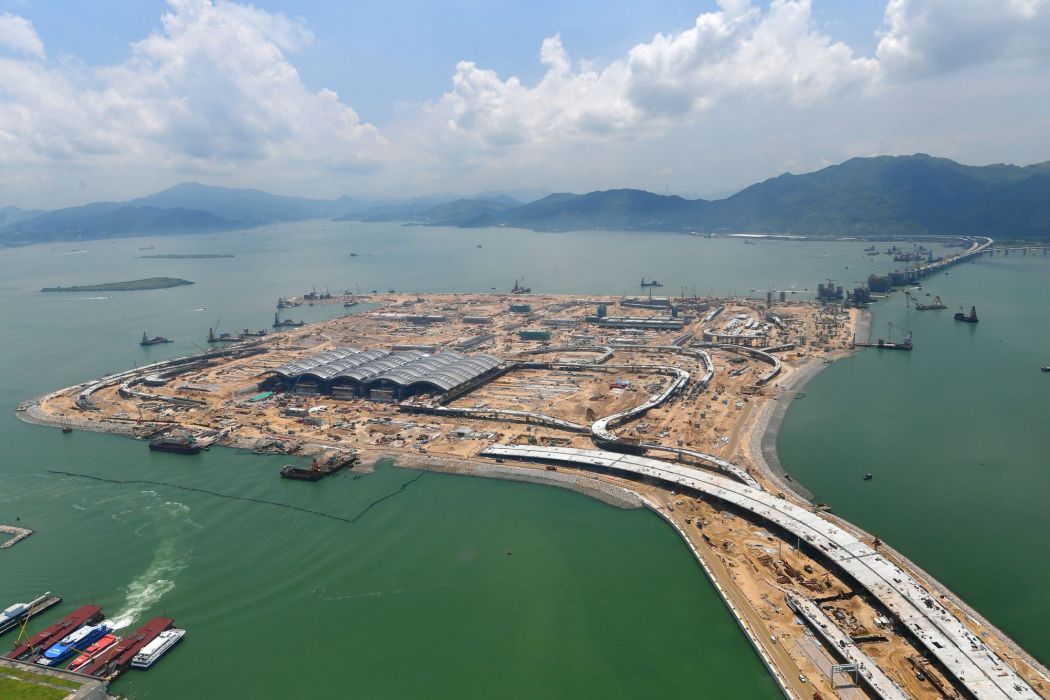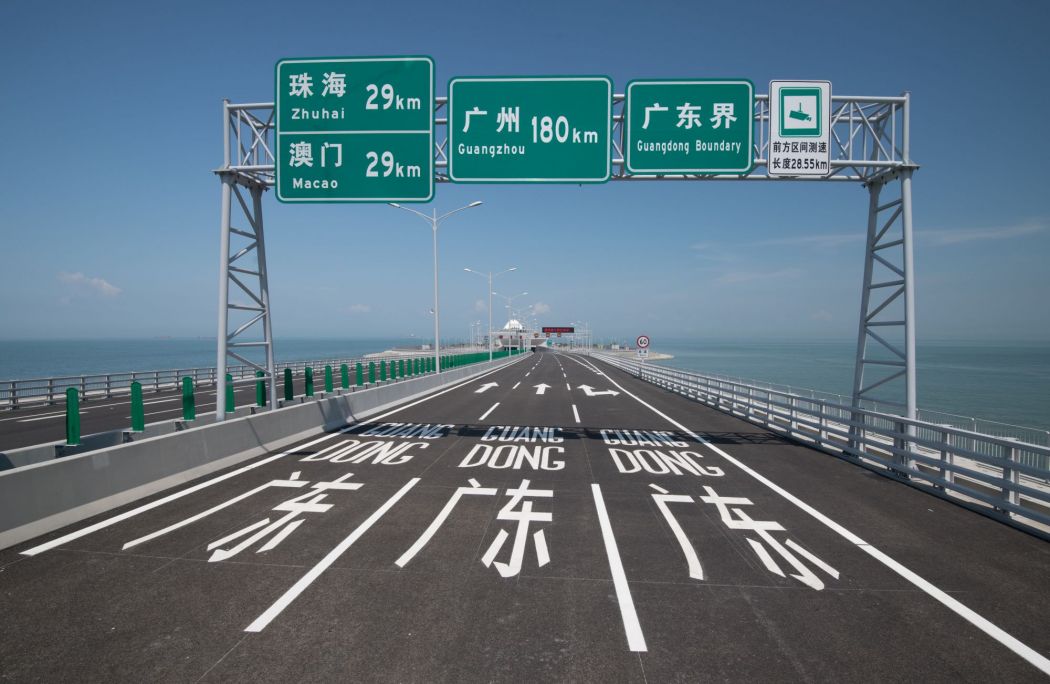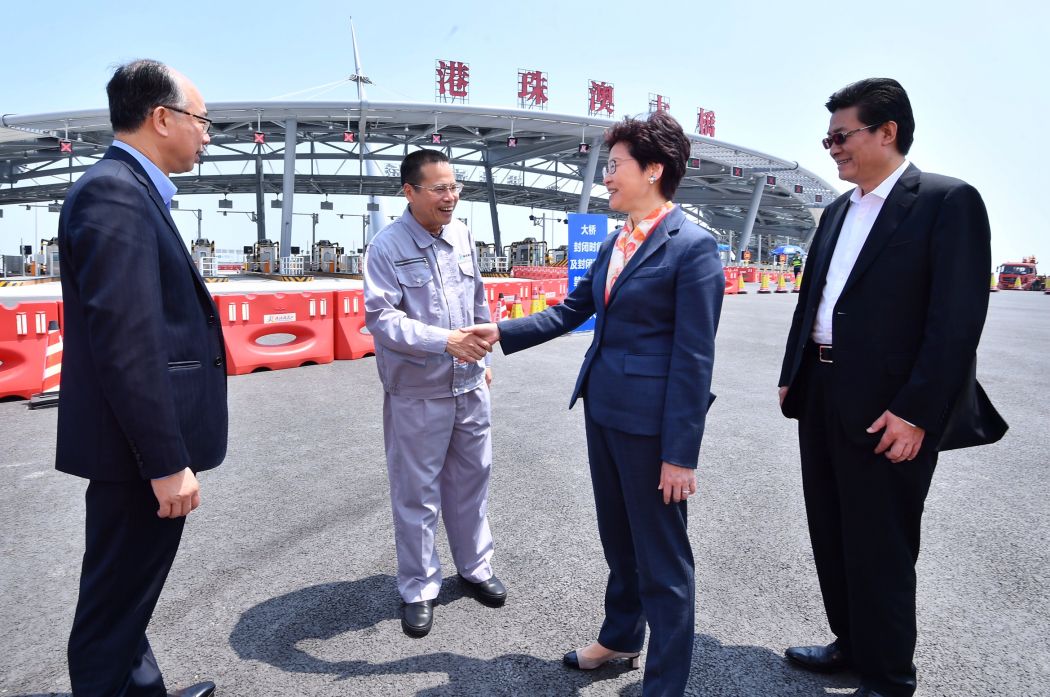The Hong Kong-Zhuhai-Macao Bridge will officially open to traffic on Wednesday. But its construction was late, over-budget and the procedure drivers must go through to actually use the bridge remains notoriously complex.
The 55km bridge stretches 22.9km over the sea and includes a 6.7km underwater tunnel. Construction began on the mega-project in 2009 and it was built to have a lifespan of 120 years. Below are some of the controversies which have surrounded its opening.

Delays
The opening day of the bridge was pushed back multiple times. It was expected to start operating by the end of 2016, but the construction of the main projects were only completed in February this year. The boundary crossing facilities for the Hong Kong side were the final parts to be completed.
The delay in opening the bridge was reportedly because of difficulties in coordination between all three cities on immigration and customs clearance mechanisms, as well as disagreements over the desired opening date, which had to be approved by all three sides.
Budget overruns
The initial budget for the Hong Kong side stood at HK$76.2 billion, but the government had to ask for additional funding from the Legislative Council multiple times, increasing the bill to HK$117.7 billion.

In 2010, a Tung Chung resident filed a judicial review challenging the environmental impact assessment reports for the bridge. She first won the case but then lost an appeal, before giving up an opportunity to lodge a final appeal. The government claimed the delay caused by the legal challenge was around nine months and cost HK$8.8 billion.
But the cost increases were often related to construction issues. In explaining the latest budget overrun of HK$2.36 billion last November, the government said it was because of a rise in labour and material costs, and refinements of the design and construction schemes.
Construction problems
In September 2015, the government confirmed that the artificial island for the Hong Kong boundary crossing facilities – a reclaimed Hong Kong-side port next to the airport – had moved by up to seven metres since 2014.

In February last year, the Highways Department was accused of covering up the irregular movements of seawalls built near Hong Kong airport. The department confirmed that it had discovered “movements” at the end of 2014, but denied allegations from lawmakers that it had tried to cover up the incident for two years.
Additionally, serious water seepage had occurred at the port immigration building, causing flooding at a basement generator room. A video shot in June showed black smoke coming out of the electric cabinet.
Environmental issues
In July 2016, the World Wide Fund for Nature said that no Chinese white dolphins could be found in the northeast waters near the bridge construction.
But the authorities said the bridge’s location and alignments were carefully chosen to avoid the most active areas of the rare dolphins. It also said it took eleven mitigation measures to prevent construction from affecting the dolphins.

Fatalities
The construction of the bridge has led to the deaths of 19 workers and injured over 600. A government investigation into the accidental deaths of two workers was completed last year, but the Highways Department has yet to make it public.
Drifting breakwater blocks
In April, the breakwater components at one of the bridge’s artificial islands were found to be disconnected from the main structure. Several veteran engineers said that they offered no protection at high tide as they are underwater.
But the bridge authority and the Hong Kong government said the design had a scientific basis and they have confidence.

Falsified tests and hacking
It emerged last year that falsified concrete compression tests had been submitted by engineers. Technicians used high-strength concrete cubes to falsify the tests in order to replace the original results.
The Independent Commission Against Corruption charged 19 former laboratory staff at Jacobs China Limited, a contractor of the Civil Engineering and Development Department, for their alleged roles in the scandal. A former site laboratory technician was jailed for eight months last December and two other technicians were jailed for 22 and 32 months in July.
Last March, a computer at the bridge project was hacked, though the government only admitted the incident occurred following media reports two months later. The hackers locked files, demanded ransoms, and eventually deleted some files after the police were notified.

Complex procedures for drivers
A video produced by the Hong Kong government claimed the application process to use the bridge was “simple and convenient,” but the mechanism appeared to be more complicated.
For a Hong Kong private car driver to use the bridge, they must have permits from all three cities. The application to obtain Hong Kong and Macau permits may take 12 working days to complete – and insurance from Macau and Zhuhai is also required. They will also have to reserve parking spaces 12-hours before departure.

Limited car quota
A limit of 10,000 private cars from Hong Kong are allowed to use the bridge. Applications are open to local, recognised high-tech enterprises or firms who have submitted total tax payments of at least RMB100,000 (HK$115,395) in Guangdong over the past three years.
It is also open to Hong Kong residents who have made accumulative charitable donations of more than RMB5 million (HK$5.77 million) in Guangdong province, or Hongkongers who are members of the National People’s Congress and the Chinese People’s Political Consultative Conference at national, provincial, prefecture and county levels of Guangdong province.
According to a report in July, a permit to use the bridge was sold at a market price of RMB500,000 (HK$576,975).

Bus-ferry competition
It will take a shuttle bus around 40 minutes to travel between Hong Kong and Zhuhai at HK$80 per ride. But since the shuttle bus will stop at the Hong Kong port, passengers will have to transfer to an airport bus if they wish to go into the city, which may take another hour and cost an additional HK$40.
In comparison, a direct ferry between Jiuzhou Port in Zhuhai and Sheung Wan/Tsim Sha Tsui in Hong Kong takes 70 minutes and cost HK$220.
The shuttle buses, however, will be more frequent – running every five minutes during peak hours and up to every 30 minutes at night. Ferries usually depart every one to two hours.

Break-even period
Before construction started, the expected time for the bridge to break even stood at 36.5 years.
However, because of budget overruns, a decrease in traffic predictions and the limits on use, mainland scholar Zheng Tianxiang of the Sun Yat-sen University has said that it may take more than 72 years to break even.
